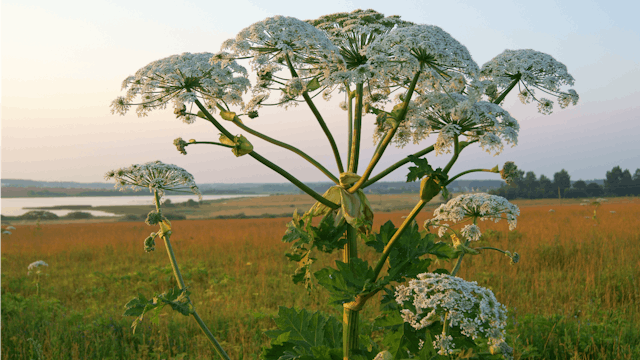Beware: Those Pretty Wildflowers You Want To Pick Could Be Dangerous

Summer is here and so are all the beautiful flowers. One of things I love most about living in a rural area is there are so many places to see beautiful flowers popping up. I’m constantly looking for wild displays to bring into my home — there is something about flowers that aren’t perfect and manufactured that make me incredibly happy.
I’ve been know to cut things that are labeled as weeds and set them on my dining room table. Even if I have no idea what they are, their beauty captivates me and I can’t help myself.
That all changed a few years go when my sister was out picking berries and came across some beautiful, yellow wild flowers that resembled Queen Anne’s Lace (also know as cow parsley), and she picked some to bring home.
Before long, she had burns on her arms that looked horrifying and painful. She found out she’s gotten into wild parsnip, and it made us both realize we our habit of just picking flowers without identifying them needed to stop — her wounds were pretty bad, but they could have been worse.
And just the other day on a drive, I spotted some wild hogweed. It really is beautiful, and a big bouquet would look amazing in the center of a kitchen island with some greens, but it can also give you third degree burns, and in some cases, cause blindness. Had I not stopped to identify the plant, I would have no idea what it was.
Giant hogweed also resembles Queen Anne’s Lace (but on steroids) and can grow up to 14 feet tall. According to an article in Better Homes & Gardens, it’s the sap of the weed that’s so dangerous. In fact, the sap can cause third-degree burns as well as permanent blindness.
The weed is invasive and has been spotted in the Northeast, Pacific Northwest, Virginia and parts of North Carolina along the road, rivers in fields, in the forest — essentially it can grow anywhere and has been named a noxious weed by the United States Department of Agriculture.
If you do come into contact with Hogweed, you are advised to wash immediately with cold water and soap. Next, apply sunscreen to the exposed area because the sun’s exposure will make it worse. and if you see any signs of a reaction, seek medical help as soon as possible.
If you get it in your eyes, wash them out as soon as possible and wear sunglasses for a few days after exposure.
If you find wild hogweed on your property and want to remove it, you must wear protective clothing and soak the plant with a herbicide. Never use a weed wacker or mover, all you will do is splatter the poisonous sap all over the place.
Enjoy the summer and wild flowers from afar, unless you know exactly what they are. There are enough mysterious rashes and allergies we have to deal with without inflicting pain on ourselves because we want to have a nice bouquet.
Don’t forget to show your kids what plants such as wild hogweed, and poison oak or ivy look like, and remind them often to not touch, pick, or eat anything in the wild unless an adult is with them.
This article was originally published on